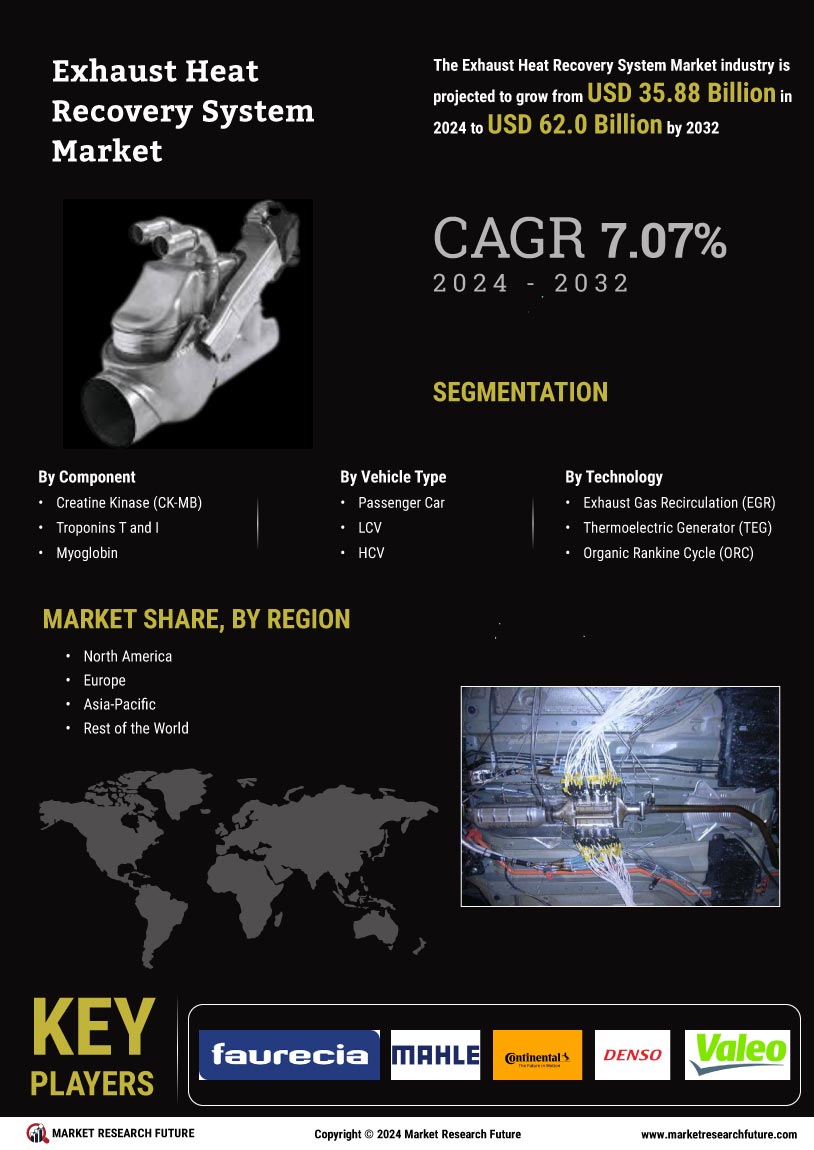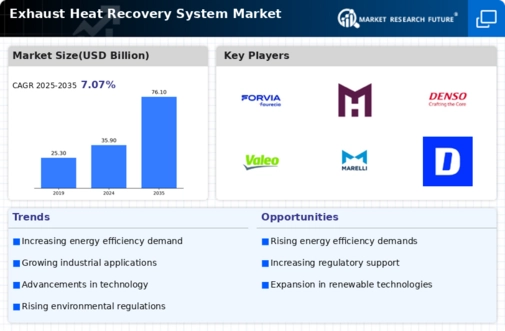Growing Industrialization
Rapid industrialization across developing nations is a key driver for the Global Exhaust Heat Recovery System Market Industry. As industries expand, the demand for energy-efficient technologies becomes paramount. Countries such as India and Brazil are investing heavily in infrastructure and manufacturing, leading to increased energy consumption. The adoption of exhaust heat recovery systems in these regions can mitigate energy costs and improve operational efficiency. This trend is expected to contribute to the market's growth, with projections indicating a rise to 76.1 USD Billion by 2035, as industries seek to optimize energy use and reduce operational expenses.
Market Growth Projections
The Global Exhaust Heat Recovery System Market Industry is projected to experience substantial growth over the coming years. With a market value of 35.9 USD Billion anticipated in 2024, the industry is expected to expand significantly, reaching 76.1 USD Billion by 2035. This growth trajectory indicates a compound annual growth rate of 7.07% from 2025 to 2035, reflecting the increasing adoption of energy-efficient technologies across various sectors. The market's expansion is driven by factors such as rising energy costs, regulatory pressures, and a growing emphasis on sustainability, positioning exhaust heat recovery systems as a vital component of modern industrial practices.
Technological Advancements
Innovations in technology are significantly influencing the Global Exhaust Heat Recovery System Market Industry. The development of advanced materials and systems, such as high-efficiency heat exchangers and smart control systems, enhances the performance of exhaust heat recovery systems. These technological advancements allow for better integration with existing industrial processes, thereby maximizing energy recovery. As industries increasingly adopt these cutting-edge solutions, the market is likely to witness a compound annual growth rate of 7.07% from 2025 to 2035. This growth underscores the importance of continuous innovation in driving market expansion.
Economic Incentives and Subsidies
Economic incentives and subsidies provided by governments are playing a crucial role in promoting the Global Exhaust Heat Recovery System Market Industry. Many countries offer financial support for industries that invest in energy-efficient technologies, including tax credits and grants. These incentives lower the initial investment barrier for companies considering exhaust heat recovery systems, making them more accessible. As industries take advantage of these financial benefits, the market is poised for growth. The combination of economic incentives and the increasing need for energy efficiency suggests a robust future for the industry.
Increasing Focus on Sustainability
The Global Exhaust Heat Recovery System Market Industry is benefiting from a heightened focus on sustainability among corporations and governments. Organizations are increasingly recognizing the importance of reducing their carbon footprint and achieving sustainability goals. This shift is prompting investments in energy-efficient technologies, including exhaust heat recovery systems, which can significantly lower emissions and energy costs. As more companies commit to sustainability initiatives, the demand for these systems is expected to rise, further propelling market growth. The alignment of corporate strategies with environmental objectives is likely to shape the future landscape of the industry.
Rising Energy Efficiency Standards
The Global Exhaust Heat Recovery System Market Industry is experiencing a surge in demand due to increasingly stringent energy efficiency standards. Governments worldwide are implementing regulations aimed at reducing energy consumption and greenhouse gas emissions. For instance, the European Union's Ecodesign Directive mandates that industrial systems meet specific efficiency criteria. This regulatory environment encourages industries to adopt exhaust heat recovery systems, which can significantly enhance overall energy efficiency. As a result, the market is projected to reach 35.9 USD Billion in 2024, reflecting a growing recognition of the need for sustainable energy solutions.





















